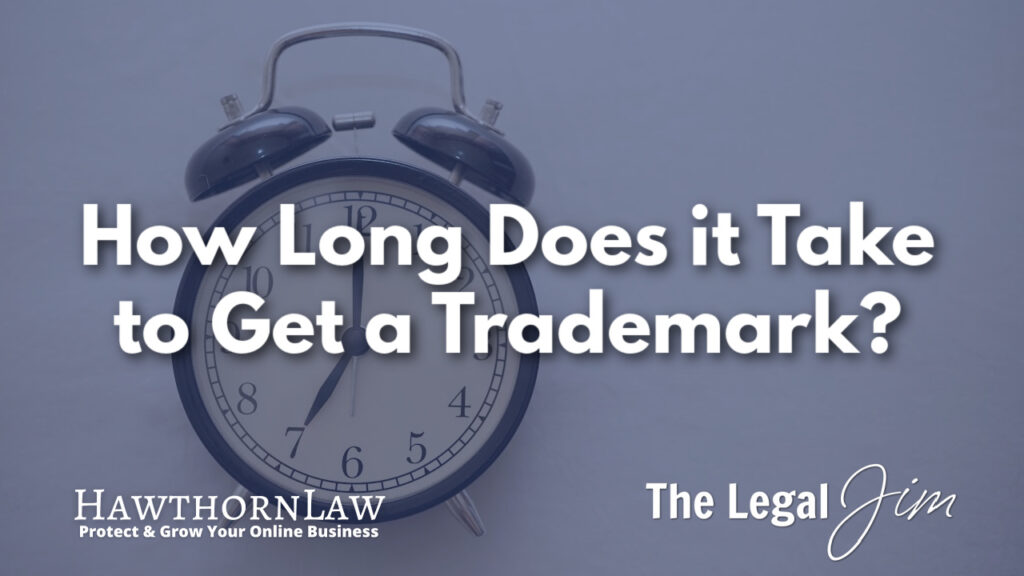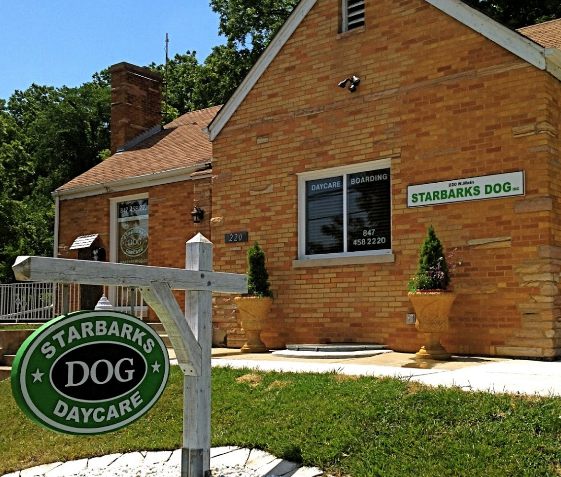Securing a trademark will take you a minimum of one year, but I typically tell my clients it will take between 12 to 18 months… and that is if things go smoothly.
Factors such as application volume and the USPTO’s response times play a critical role in answering the question, “how long does it take to get a trademark?” Keep reading to learn about each phase of the trademark process and what can accelerate or delay your application.
Table of Contents
Key Takeaways
- The typical duration for trademark registration with the USPTO ranges from 12 to 18 months, and various factors such as the quality of the application and how quickly you respond to office actions can influence this timeline.
- Early trademark filing is crucial as it establishes priority, offers retroactive protection from the filing date of your application, and prevents others from claiming the trademark for a competing use (which is especially important once you “go public” with your brand).
- The trademark registration process consists of several stages including preparing the application, examination, publication, opposition, and then final registration, each of which must be navigated successfully for the trademark to be registered. An experienced trademark attorney can guide applicants through these stages quickly and efficiently.

Understanding how long does it take to get a trademark?
The trademark registration process is not a sprint; it’s a marathon. A typical timeline for registration hovers around 13 months, but it can range from 12 to 18 months or even more. The time it takes to secure a trademark is influenced by three primary factors: the detailed process of review by a government agency in multiple phases, the quantity of applications the USPTO has to process, and any delays that may arise from the applicant's end.
Additionally, once your application has gone through the final trademark approval process, it’s not a one-and-done deal. The initial registration is valid for ten years, and as long as the mark remains in use, you can renew it every ten years thereafter (the first renewal is due after five years, however).
Let’s take a closer look at the factors that will influence how quickly your trademark will register.
Factors Affecting Trademark Registration Time
The complexity and quality of a trademark application significantly influence the time it takes for your application to get approved. This is underscored by the fact that anywhere from 60-80% of all trademark applications initially face rejection, a testament to the rigorous examination process employed by the USPTO.
Other factors that impact the registration time include:
- The number of office actions needed to resolve application issues
- The swiftness with which these actions are responded to
- The nature of your trademark’s use in commerce
- Your ability to provide proof of use
It’s also worth noting that the road to get a trademark registration can be winding, making it all the more important to start your journey early.
The Importance of Filing Early
Time is of the essence when it comes to filing a trademark application. Early filing establishes priority in any legal disputes that may arise over the trademark. But that’s not all. Once your trademark is granted, you enjoy retroactive protection from the original application filing date.
I can't tell you how many clients have come to me to file a trademark application several years after they started their business just to find out that another competitor filed either an identical or nearly identical trademark application a mere weeks before the client called my office. Early filing of your trademark application can save you lots of headaches, not to mention additional legal fees that may be necessary to secure your registration certificate.
Applying for a trademark as soon as you’ve decided on a name, slogan, logo, or phrase for your product or service helps prevent others from filing an application before you and secures the legal rights to your name once you begin making commercial sales.
In essence, filing early is akin to staking your claim to a piece of land in the world of commerce. It ensures immediate protection, which extends back to the filing date, acting as a critical safeguard for your brand (and causing you to sleep a lot better at night knowing your brand is safe and secure!)
Stages of the Trademark Registration Process
The trademark registration process is akin to a relay race, spanning several distinct stages before the baton i.e., the trademark, is successfully registered. The key stages include:
- Initial clearance search
- Application phase
- USPTO review and assessment
- Publication
- Receipt of a Notice of Allowance
- Filing a statement of use
- Issuance of a Registration Certificate.
While the process might seem daunting, understanding each stage can make the journey less intimidating and more manageable. Let us break down each stage to help you navigate this path more confidently.
Initial Clearance Search and Filing the Application
Filing a trademark application is akin to taking the first step on a long journey. The USPTO strongly encourages trademark applicants to use the Trademark Electronic Application System (TEAS) for electronic filing, which is the recommended method for submitting trademark applications.
Before filing, it’s essential to conduct a search using the trademark electronic search system to ensure that your desired mark is unique and not already registered. Once you have determined that there are no other businesses using your name or a name that is likely to be confused with your name, then you may begin preparing your trademark application.
A proper and complete application includes:
- The applicant’s name and address
- A precise drawing of the mark
- A list of goods and/or services associated with the trademark
- A filing fee
- A signed declaration of commercial use or intent to use the mark commercially.
For a design mark (or logo), the application must contain clear, concise, and properly formatted artwork. For a word mark, the brand name must be presented exactly as it is used or will be used in commerce.
Accuracy is paramount when filing an application, as any discrepancies can lead to delays or even rejection.
USPTO Examination

Once your application is filed, it’s time for the USPTO to take the baton. Your application will be assigned to a USPTO examining attorney, who will review the application for adherence to trademark rules and identify any potential conflicts with existing trademarks. This review process typically starts eight to ten months after the application is filed.
The examining attorneys have strict quotas that they must meet – reviewing approximately 12-13 applications per business day. This includes an initial review of your application, conducting their own trademark search, and then issuing an office action if necessary (and it usually is). That means that in an 8 hour day, the examining attorney is taking approximately 30-45 minutes per application!
One of the key hurdles that may arise during this stage is the issuance of an office action. An office action is a letter from the examining attorney outlining potential legal issues with the application, ranging from statutory and procedural complications to likelihood of confusion with existing marks. An effective response to an office action should include clear and concise rebuttals to the issues raised, with additional documentation, specimens, amendments to the application, or legal arguments as necessary.
Time is of the essence when responding to office actions. Applicants have a three-month window to respond, and any delay can significantly prolong the USPTO trademark registration timeline. After a response to an office action is filed, the USPTO typically takes two to six months to consider the applicant’s submission (but I've seen responses to responses filed in as little as 2-4 weeks).
Publication and Opposition
Once your trademark has passed the examination stage and cleared all office actions, it’s time for it to step into the spotlight. An approved trademark application goes through the following steps:
- It is published in the Trademark Official Gazette approximately 3 months after approval.
- This marks the start of the 30-day opposition period.
- During this period, third parties can file oppositions if they believe that your trademark infringes on their trademark rights.
If no opposition is filed against your trademark application, or if any filed opposition is resolved, the application will proceed to the next step towards registration.
However, an opposition can initiate an extended dispute resolution process that may delay the trademark registration process by 1-12 months, or even kill your hopes of receive a registration. If you make it this far without an attorney (good for you!) but receive an office action, I highly recommend you reach out to a trademark attorney for assistance.
Large corporations frequently file oppositions as a means to “bully” smaller brands into giving up their trademark applications. They know that funds are limited for small business, and they are quick to take advantage of this. Don't let this happen to you – seek out a lawyer for assistance.
Final Approval and Registration
Following the opposition period, your trademark is on the home stretch of the relay race. If it has navigated all the hurdles successfully, the USPTO will grant final approval by issuing a trademark registration certificate, serving as proof of a legally enforceable federally registered trademark.
The issuance of the registration certificate from the trademark office typically occurs within 1-3 months following publication in the Official Gazette, marking the conclusion of the trademark registration process if no opposition is filed to your application.
However, if you haven’t yet presented proof that you are using your trademark in commerce, then the USPTO will issue a Notice of Allowance in lieu of a trademark registration certificate. This indicates that the trademark has been approved post-publication but requires you to demonstrate actual use of the mark in commerce or otherwise request an extension of time before final trademark approved registration can be issued.
Overcoming Delays and Challenges
Even the best-laid plans can face hiccups, and the trademark registration process is no exception. A significant delay can occur due to a backlog of applications at the patent and trademark office.
This started during the pandemic, when a flurry of applications were filed and examining attorneys began working from home thus leading to delays. The timeline to review an application went from 1-3 months to 8-10 months almost overnight, and has not yet come back to normal.
So, how long does it take to get a trademark? As I mentioned at the beginning, you are looking at a minimum of one year, but in many cases it can take much longer. Further delays can occur if the examining attorney issues an office action to specify issues that need addressing.
Understanding these common delays is crucial for navigating the trademark process effectively. For instance, filing a “Petition to Make Special” can accelerate the trademark registration process under special circumstances.
Moreover, preparing a strong application with the help of a trademark attorney and adhering to best practices and tips for timely application processing can often help circumvent delays and streamline the registration process.
When an examining attorney points out issues through an office action, responding strategically within the three-month response window is critical to prevent further delays. This is where the expertise of a trademark attorney can prove invaluable.
But maybe a delay works to your benefit?
I realize this may seem contrary, but there are situations where strategically delaying your application may prove beneficial.
For example, if the examining attorney cited a mark against your application that is up for renewal, but the company that owns the mark has gone out of business. Or if you need more time to file a cancellation against another mark. Or if you are attempting to negotiate a co-existence agreement with a third party.
There are all sorts of reasons why you may want to slow down the prosecution of your trademark application. To make sure you are handling the process correctly and strategically, you may want to work with a trademark lawyer for assistance and counsel.
Working with an Experienced Trademark Attorney
Just as a seasoned coach can guide an athlete to victory, a trademark attorney can enhance the chances of a successful application and ensure faster trademark approval times. They can significantly reduce processing times for trademark registration by:
- Conducting effective clearance searches
- Ensuring your application is thorough and complete
- Interpreting and promptly respond to USPTO correspondence
- Helping you provide proper evidence of use.
Trademark lawyers are adept at steering applicants away from potential rejections by carefully distinguishing their marks from those already in existence or by advising against marks that are overly descriptive, thus diminishing the likelihood of refusal and challenges from other parties.
They also provide essential advice on decisions regarding who should own your trademark, the filing basis for your trademark application, and minimizing the risk of opposition or legal challenges from competitors. The significance of a comprehensive trademark clearance search and the critical role played by the trademark office in the trademark timeline cannot be overstated.
Clearly, engaging a trademark attorney to navigate the examination process with a trademark examiner at the patent and trademark office can significantly boost your chances of success and expedite teh trademark timeline.
It's no wonder the trademark office strongly encourages applicants to do so!
If you are ready to get started on your trademark application, please use this link to schedule a free consultation!
International Trademark Considerations
If you’re eyeing the global stage for your brand, international trademark registration should be on your radar. This process can be streamlined through the EUIPO, which allows a single application to provide protection across European countries, or the Madrid Protocol, which offers a centralized system with a unified language, one fee payment, and coverage across all member nations.
The Madrid Protocol application process includes the following steps:
- Start with an existing national or regional ‘basic mark’.
- WIPO conducts a formal examination to ensure all requirements are met, such as contact details, designated countries, image quality, and fee payment.
- Each designated member country’s IP office performs a substantive examination.
- The IP office has a deadline of 12 or 18 months to decide on the trademark application.
- If no decision is issued within this period, it leads to automatic ‘tacit’ approval.
Summary
The journey to trademark registration may seem long and complex, but understanding each stage of the process can make it easier to navigate. From filing an initial application to the final approval, each step is crucial in securing your brand’s identity and naming rights. And while challenges and delays may arise, strategic responses and adherence to best practices can help you overcome these hurdles.
Don’t forget that you don’t have to tread this path alone. Engaging a trademark attorney can provide valuable guidance and enhance your chances of a successful trademark registration. After all, your trademark is more than just a name or a logo – it’s a reflection of your business and your brand, and it deserves the best protection possible.
Frequently Asked Questions
How long does the trademark registration process usually take?
The trademark registration process usually takes about 12 to 18 months, with an average duration of 13 months.
What factors can affect the time it takes to register a trademark?
The time it takes to register a trademark can be affected by factors such as the application's complexity and quality, the number of office actions issued, the examining attorney assigned to your file and the timeliness of responses to these actions. These factors play a crucial role in the registration process.
Why is it important to file a trademark application early?
It is important to file a trademark application early because doing so establishes priority in legal disputes and provides retroactive protection from the filing date. This can help secure your rights to the trademark.
What are the key stages of the trademark registration process?
The key stages of the trademark registration process include the initial clearance search, preparing an application, USPTO review and assessment, publication, receipt of a Notice of Allowance, filing a statement of use, and the issuance of a Registration Certificate.
How can an experienced trademark attorney aid in the trademark registration process?
An experienced trademark attorney can significantly increase the likelihood of a successful trademark registration by conducting effective clearance searches, interpreting USPTO correspondence, and providing proper evidence of use. This can result in faster approval times and a higher chance of allowance.
Summary of Episode #27
Are you wondering how long it takes to get a trademark?
in today’s episode we walk you through everything you need to know, including what needs to happen in the first two weeks before you file your trademark application and why that timing is so important.
Here is the process from beginning to end:
- Decide that you want to trademark your business name (and pick a name)
- Run a comprehensive search and decide to move forward – (If you have a lawyer, make sure they give you a legal opinion!)
- Decide on your classes of goods and services and a description for what you are selling
- Prepare and file your application
- Wait
- Wait some more (usually up to 8 months)!
- Respond to any office actions. They can be substantive or non-substantive and you have 6 months to respond (so no excuses!)
- Your application will proceed to publication!
- Assuming no issues, your mark will register! Time to celebrate!
- But the fun isn't over, continue to monitor and enforce your mark for as long as you maintain the trademark!
Total time, from beginning to end, is approximately 12-18 months!
Click here to download our free DIY Trademark Playbook.
Subscribe
Apple | Google | Spotify | Stitcher | Overcast
Resources Mentioned
Some of the resources mentioned are affiliate links, which means that if you purchase through this link, we will receive a small commission, but it won't cost you any extra money. This is a great way to support what we are doing here at Hawthorn Law. Thank you!
If you are interested in learning more about building and online brand and making sure it is legally protected, click here to schedule a strategy call and get started today.
To get on the waiting list for our new legal training, click here.
The Biggest Takeaways
- The time between running a search and filing your application needs to be FAST!
- Right now it takes approximately 7.7 months for the USPTO to assign an attorney to review your file.
- Between 25-50% of applicants will receive an office action. The risk is higher if you don't hire a lawyer for help.
- Having solid contracts in place to protect your legal relationships is extremely important. For some lawyer-drafted templates that you can use immediately, click here.
Don't Forget to Subscribe!



Next Steps…
Would you like to work with Jim on a deeper level?
Click here to schedule a strategy call and learn how we can help you to protect your online brand.
If you are an aspiring entrepreneur ready to join our membership now, click here.
If you need some legal templates for your online business, click here.
If you are looking for a lawyer to help you with the legal aspects of your online business, click here.
Legal Disclaimer
The content of this podcast episode is provided for informational purposes only and is not intended to constitute legal advice. You should not rely upon any information contained on this podcast episode for legal advice. Listening to The Legal Jim Podcast is not intended to and shall not create an attorney-client relationship between you and James W. Hart or The Hart Law Firm, P.A. d/b/a Hawthorn Law. Messages or other forms of communication that you transmit to this website will not create an attorney-client relationship and thus information contained in such communications may not be protected as privileged. Neither James W. Hart nor The Hart Law Firm, P.A. makes any representation, warranty, or guarantee about the accuracy of the information contained in this podcast episode or in links to other podcasts, resources or websites. This podcast is provided “as is,” does not represent that any particular outcome will result from listening to this episode. Your use listening to this podcast is at your own risk. You enjoy this podcast episode and its contents only for personal, non-commercial purposes. Neither James W. Hart, The Hart Law Firm, P.A., nor anyone acting on their behalf, will be liable under any circumstances for damages of any kind.



